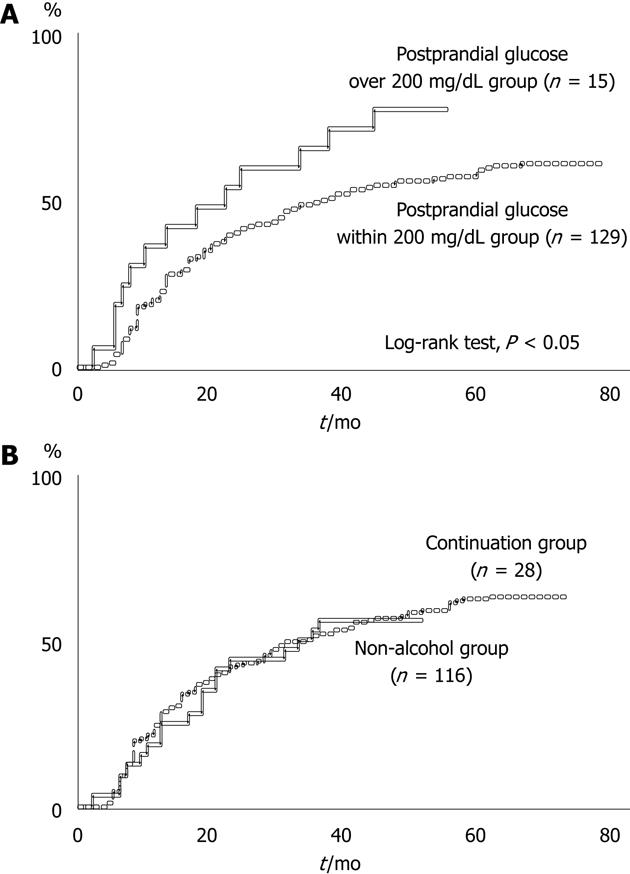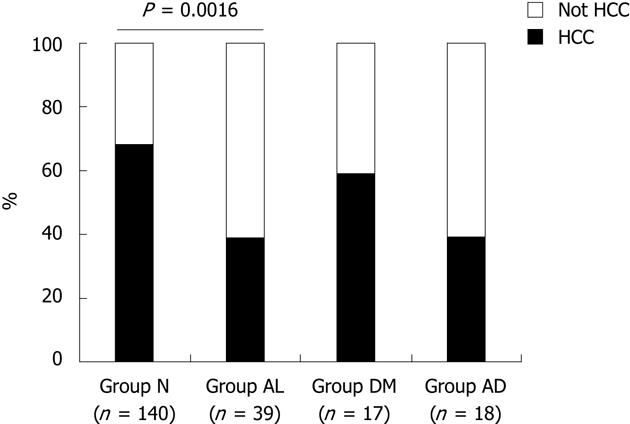Copyright
©2013 Baishideng Publishing Group Co.
World J Gastroenterol. Jan 7, 2013; 19(1): 78-85
Published online Jan 7, 2013. doi: 10.3748/wjg.v19.i1.78
Published online Jan 7, 2013. doi: 10.3748/wjg.v19.i1.78
Figure 1 Duration from initial curative therapy for hepatocellular carcinoma to hepatocellular carcinoma recurrence in the different region.
A: The period until developing a new lesion in a remote location of the liver was significantly longer in the postprandial glucose within 200 mg/dL group with diabetes mellitus than in the postprandial glucose > 200 mg/dL group without local recurrence after initial therapy for hepatocellular carcinoma (HCC) (log-rank test, P < 0.05); B: There was no difference in the period between the non-alcohol group with a history of drinking and the continuation group without local recurrence after initial curative therapy for HCC.
Figure 2 Cause of death in T1-T3 stage hepatocellular carcinoma.
The rate of death from causes other than hepatocellular carcinoma (HCC), including hepatic failure, gastrointestinal bleeding, ischemic heart disease, cerebral vessel disease, and bacterial infection, was significantly higher in Group AL than Group N (P = 0.0016). The cause of death in Group diabetes mellitus (DM) was similar to that in Group N, and Group AD was similar to Group AL. Group N, patients belonging to both the non-alcohol group and postprandial glucose within 200 mg/dL group; Group AL, patients belonging to both the continuation group and postprandial glucose within 200 mg/dL group; Group DM, patients belonging to both the daily alcohol intake < 20 g ethanol and postprandial glucose > 200 mg/dL group; Group AD, patients belonging to both the continuation group and postprandial glucose > 200 mg/dL group.
- Citation: Abe H, Aida Y, Ishiguro H, Yoshizawa K, Miyazaki T, Itagaki M, Sutoh S, Aizawa Y. Alcohol, postprandial plasma glucose, and prognosis of hepatocellular carcinoma. World J Gastroenterol 2013; 19(1): 78-85
- URL: https://www.wjgnet.com/1007-9327/full/v19/i1/78.htm
- DOI: https://dx.doi.org/10.3748/wjg.v19.i1.78










